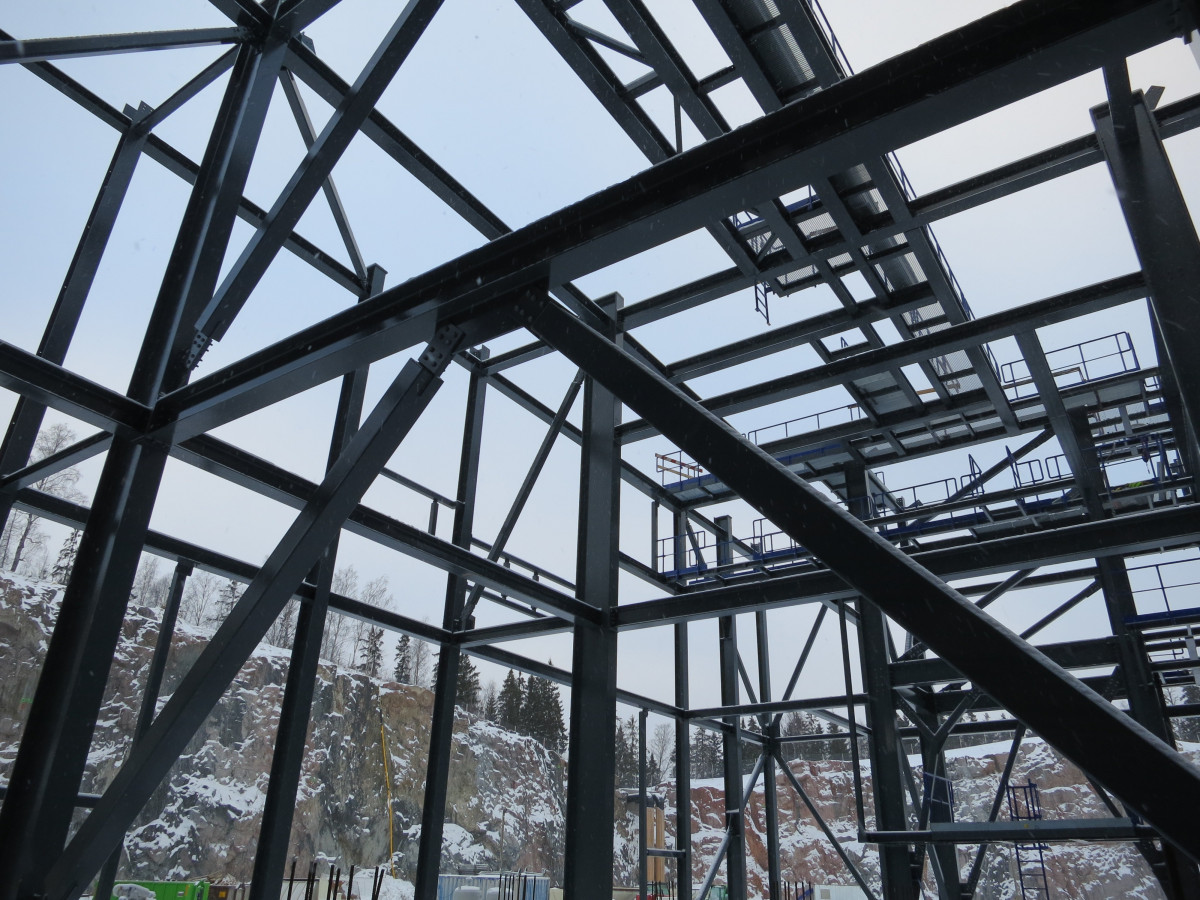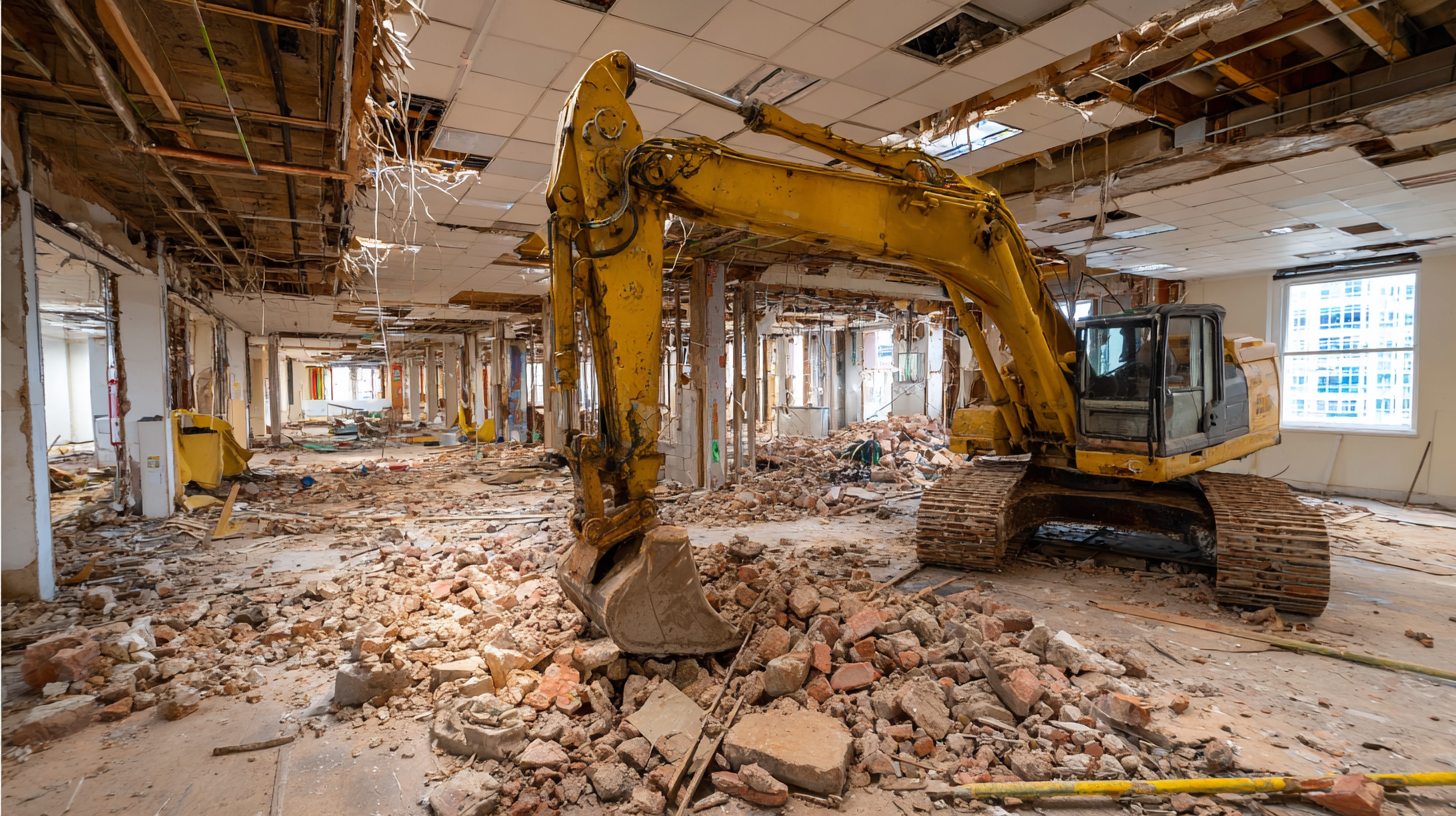🏗️ How Soft Strip Demolition Prepares Buildings for Refurbishment or Redevelopment
When a property is being prepared for a major refurbishment, redevelopment, or fit-out, one of the most important early stages is soft strip demolition. This process forms the backbone of pre-construction preparation, ensuring that a building is safely and efficiently cleared of non-structural elements while protecting the parts that must remain intact.
Whether you’re working on a commercial office renovation, an industrial unit conversion, or a retail refurbishment, the right approach to internal strip-out work can make all the difference in keeping your project on schedule, within budget, and fully compliant with UK safety and environmental standards.
At its core, soft strip demolition is designed to create a clean slate. Contractors remove fixtures, fittings, partitions, ceilings, floor coverings, mechanical and electrical systems, and other non-load-bearing components that are no longer needed. This allows follow-on trades and fit-out teams to access a clear, obstruction-free space where new systems, designs, or structural improvements can be implemented.
Professional soft strip contractors don’t just rip out interiors—they work to detailed plans aligned with the broader project vision. One of the first steps in the process is site clearance. This goes beyond waste removal; it involves preparing the entire area for the incoming phases of work, whether that’s reconfiguration, mechanical upgrades, or full structural demolition. Materials are removed methodically, with an eye toward recycling and reuse wherever possible, ensuring sustainability targets are met from day one.
In active or high-occupancy buildings, special attention is paid to minimising disruption. That means implementing dust control systems such as sheeting, negative air machines, and extraction systems to protect indoor air quality. Noise is also managed using low-impact tools and phased working hours where necessary, especially in buildings that remain partially in use during the project. This level of care helps ensure business continuity, tenant satisfaction, and a safer working environment for everyone on-site.
Protecting the parts of the building that are to remain is a top priority. Whether it’s original brickwork, steel supports, structural slabs, or architectural details that are being preserved, soft strip contractors take steps to ensure that these elements are not compromised during removal work. Protective boarding, temporary barriers, and coordinated removal methods are used to prevent accidental damage and maintain structural integrity.
No two buildings are the same, which is why phased demolition planning is often essential. In many refurbishment projects—particularly in commercial and mixed-use buildings—areas of the site may need to stay operational while others undergo soft strip demolition. Experienced contractors plan the work in phases, coordinating closely with building managers, security teams, and other trades. This phased approach reduces downtime and allows for flexible scheduling that supports both the demolition and the wider project timeline.
Proper planning also means that utilities are isolated carefully before removal. Gas, water, electric, and data systems are disconnected by qualified professionals, and any live systems that must remain are clearly identified and protected. This prevents health and safety incidents and ensures the space remains compliant throughout the transition process.
Once the strip-out is complete, a professional contractor will carry out a full site clean-up. This includes sweeping, vacuuming, and removing any leftover materials or dust to leave the site safe, tidy, and ready for the next stage. A well-prepared site not only improves efficiency for incoming trades but also reflects a higher level of project professionalism.
Whether it’s a full-scale redevelopment or a light-touch refurbishment, the success of the build depends heavily on how well the site is prepared. A skilled soft strip team lays the foundation for everything that follows, offering much more than just demolition. They deliver peace of mind, reduced project risk, and a working environment that’s safe, clean, and ready for transformation.
Contractors like SoftStripContractors.co.uk are trusted across the UK to provide this level of service—from precise planning and phased execution to expert protection of structures and careful coordination with other trades. Their focus on efficiency, sustainability, and safety ensures that every project starts off on the right foot, no matter the size or complexity.
For developers, landlords, architects, and commercial property owners, choosing the right partner for site preparation is critical. When you’re planning to redevelop or refurbish a building, make sure your soft strip contractor has the experience and foresight to handle more than just removals. They should help you protect your investment, keep the project moving forward, and ensure the site is perfectly prepped for what comes next.
FAQ: Preparing Buildings for Refurbishment or Redevelopment
1. What is soft strip demolition?
Soft strip demolition is the removal of non-structural elements from inside a building. This includes internal walls, floors, ceilings, fixtures, mechanical and electrical installations, and furniture. It’s typically done to prepare a space for refurbishment, redevelopment, or complete structural demolition.
2. Why is soft strip demolition important before refurbishment?
Soft strip demolition ensures that outdated or obstructive materials are safely removed, allowing for a clean and clear workspace. It speeds up the construction process, improves safety, and reduces the risk of damage to new installations or retained elements.
3. What is included in a soft strip out?
A full soft strip typically includes removal of partitions, suspended ceilings, raised floors, cabling, lighting systems, plumbing, HVAC components, furniture, doors, fixtures, and any finishes that are not part of the load-bearing structure.
4. How do soft strip contractors handle buildings that are partially in use?
Contractors use phased demolition planning, scheduling the work in sections to minimise disruption. Dust and noise control measures are implemented to protect occupied areas, and coordination with building management ensures continuity for tenants or businesses.
5. What is phased demolition planning?
Phased planning breaks the strip-out into stages, allowing parts of the building to remain operational. This is ideal for multi-use properties like offices, hospitals, or retail units where full closure isn’t practical.
6. Are utilities disconnected during soft strip demolition?
Yes. Gas, electricity, water, and data services are safely isolated by qualified professionals before work begins. Where services must remain live, contractors mark and protect them to avoid damage.
7. How do contractors protect retained structural elements?
Structural walls, floors, columns, and any elements that are to remain are shielded using timber boarding, barrier systems, and careful manual removal methods. This prevents damage during strip-out.
8. What dust and noise control measures are used?
Contractors use dust sheeting, extraction units, negative air machines, and mist sprays to manage dust. Noise is reduced through scheduling, acoustic barriers, and low-impact tools.
9. Do you need planning permission for soft strip demolition?
Generally, no planning permission is needed for internal demolition. However, listed buildings or those in conservation areas may require consent. Always check with your local authority.
10. What is the difference between soft strip demolition and structural demolition?
Soft strip involves removing internal, non-load-bearing materials. Structural demolition affects the actual framework of the building—walls, roofs, foundations—and is more complex and regulated.
11. Is waste from soft strip demolition recycled?
Yes. Professional contractors segregate materials such as timber, plasterboard, metal, plastic, and cabling for recycling. Waste transfer documentation is issued to confirm legal and responsible disposal.
12. How long does a soft strip demolition take?
Timeframes vary. A small office may take a few days; larger commercial or industrial buildings may take weeks, especially if the work is phased. Timelines depend on size, complexity, and access.
13. Is soft strip demolition noisy or disruptive?
Some disruption is inevitable, but experienced contractors use strategies to minimise this. Quiet tools, restricted working hours, and proper communication with tenants all help reduce impact.
14. How much does soft strip demolition cost?
Costs vary depending on the building and project scope. Prices typically range from £10 to £115 per square metre. Large commercial projects may cost between £7,000 and £35,000+. Free quotes are usually available.
15. What happens after soft strip demolition is complete?
A full site clean-up is carried out. All waste is removed, the area is swept and cleared of dust and debris, and retained elements are checked and secured. The site is then ready for refurbishment, redevelopment, or structural works.
16. Why should I use a professional soft strip contractor?
Professionals bring expertise in planning, safety, environmental compliance, utility disconnection, structural protection, and waste management. They ensure your project is prepared correctly, legally, and efficiently—reducing risks and supporting long-term success.

